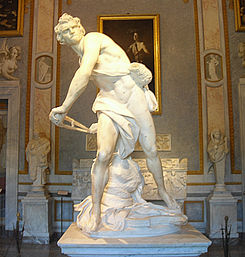My favorite types of artwork this quarter was learning about Jan Van Eyck and his mysterious paintings. Not only were they mysterious but also they were so colorful and full of uniqueness. I loved that he painted such a beautiful picture and there is always such great detail, the painting never gets boring. Specifically, I really like that he put his signature or a quote in such small detail around his paintings. That to me really makes the audience connect with the painter. For example, in “Double portrait of Giovanni Arnolfini and His Wife” (1434), there is a mirror painted in the background and if you look carefully there are scenes of Christ all around the mirror. That to me is amazing and it’s so small, it makes me wonder how he painted such a detailed mirror with little room. Jan Van Eyck set the bar when it came to oil painting. He created new and fascinating ways to make his paintings stand out. He loved the way the light shined on his paintings and I think that’s really amazing and I can definitely relate to that as I am an artist too. I was definitely intrigued by this painting because of its visual details.
Another one of my favorite art pieces is Raphael’s “ The School of Athens” in “Stanza Della Segnatura” (1510-1511). I love how much detail is throughout this painting. The vanishing point in brings this painting together and then leads your eye to the surround background. It’s interesting that he chose to put Plato and Aristotle in the center. I think that Raphael is genius for putting philosophers and then a self-portrait himself in this painting. I really liked looking at this painting because there is so much meaning all around it. From the architecture to the various stages of understand, there is a sense of realness and I really enjoy it. I think I was mostly drawn to this painting because of its historical context because it has so much meaning behind it. If I were to glance at it and didn’t know anything about who was who and why it was there, I probably would think about this painting a totally different way.
Albrecht Durer also catches my eye. His painting, “Self-Portrait” (1500), was one of my favorite paintings to learn about this quarter. This painting is interesting both visually and historically. This self-portrait has incredible detail and the way the light hits his face and hair really makes the painting stand out. My favorite part about this painting is that it interprets Christ. I think Durer is also genius to “look through the eyes of Christ” in this painting, perhaps to get closer to his viewers, but it’s a unique way to show it. I like that such thing has never been done before and I really cherish that about Durer. He had a mind of his own and he embraced it. The quality of the hair in this picture is absolutely naturalistic and the fact that he changed his hair color to match Christ’s is brilliance! He also signed every one of his paintings and just like Van Eyck, it made them more recognizable.







